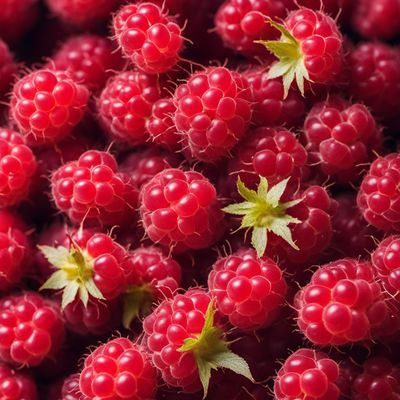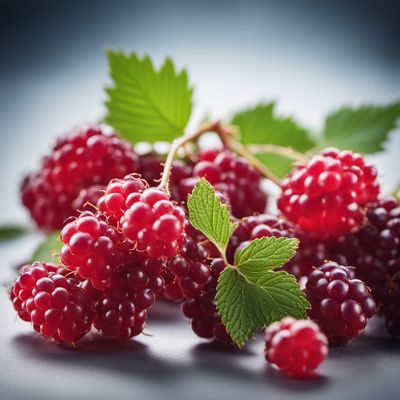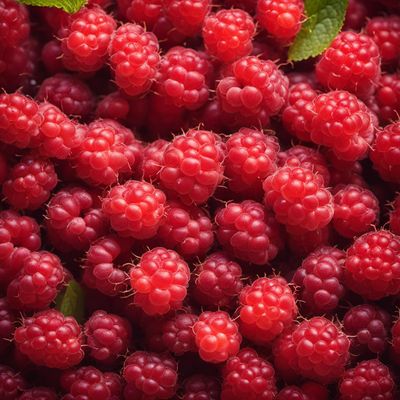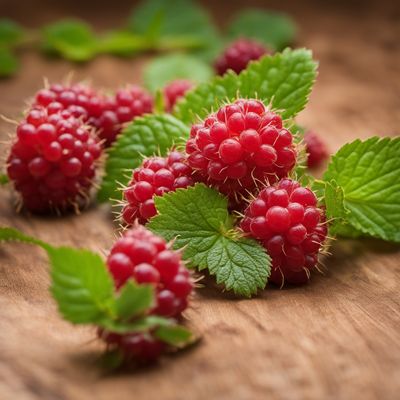
Ingredient
Thimbleberries
The Delicate Delight: Exploring the World of Thimbleberries
Thimbleberries are small, round berries that are typically bright red when ripe. They have a soft and delicate texture, similar to raspberries, and are known for their sweet and slightly tart taste. The berries are covered in tiny hairs, giving them a velvety appearance. Thimbleberries are highly perishable and should be handled with care to preserve their delicate nature.
Origins and history
Thimbleberries are native to North America and have a rich history among indigenous communities. They have been used for centuries in traditional medicine and as a food source. Thimbleberries grow in the wild, particularly in wooded areas and along riverbanks, and have been enjoyed by Native American tribes for generations.
Nutritional information
Thimbleberries are a good source of dietary fiber, vitamin C, and manganese. They are low in calories, with approximately 60 calories per cup, making them a healthy addition to any diet.
Allergens
Thimbleberries are not known to be common allergens, but individuals with berry allergies should exercise caution.
How to select
When selecting thimbleberries, look for plump and firm berries that are fully ripe. Avoid berries that are mushy or have moldy spots. The color should be vibrant red, indicating ripeness. If purchasing from a farmers market, ask the vendor about the freshness and origin of the berries.
Storage recommendations
Thimbleberries are highly perishable and should be consumed or used within a few days of harvesting or purchasing. To extend their freshness, store them in a single layer in a shallow container in the refrigerator. Avoid washing the berries until ready to use.
How to produce
Thimbleberries can be grown in home gardens, provided the right conditions are met. They prefer well-drained soil and partial shade. Planting thimbleberry bushes in early spring or fall is recommended. Regular watering and pruning are essential for optimal growth.
Preparation tips
Thimbleberries can be enjoyed fresh, added to salads, or used in various desserts such as pies, jams, and sauces. They can also be frozen for later use. To freeze, spread the berries in a single layer on a baking sheet and place in the freezer until firm. Transfer the frozen berries to airtight containers or freezer bags.
Culinary uses
Thimbleberries are commonly used in jams, jellies, and preserves due to their natural sweetness. They can also be used in pies, tarts, and sauces, adding a burst of flavor and vibrant color to desserts. Thimbleberries can be incorporated into fruit salads or used as a topping for pancakes, waffles, or yogurt.
Availability
Thimbleberries are primarily found in North America, particularly in regions with suitable growing conditions such as the Pacific Northwest, Great Lakes area, and parts of Canada.
More ingredients from this category

Dewberries
The Wild Berry Treasure: Dewberries

Boysenberries
The Alluring Berry: Boysenberries

Tayberries
The Tangy Delight

Youngberries
The Sweet and Tangy Delight

Loganberries
The Luscious Loganberry

Olallieberries
The Luscious Berry: Olallieberries

Salmonberries
The Jewel of the Forest

Other species and hybrids of genus Rubus, not elsewhere mentioned
The Berry Bonanza